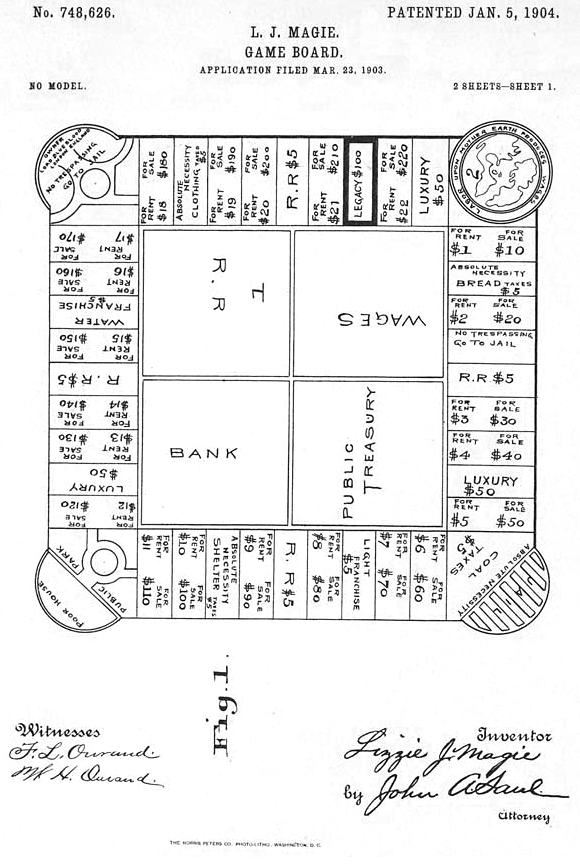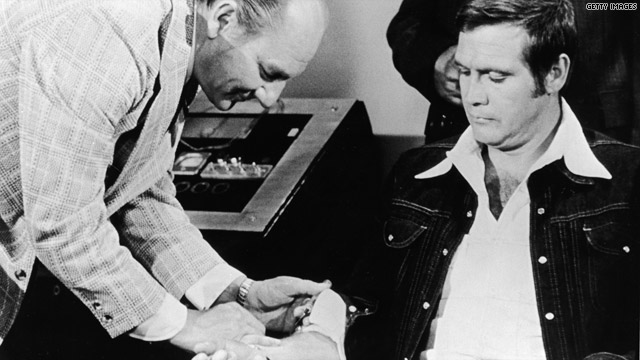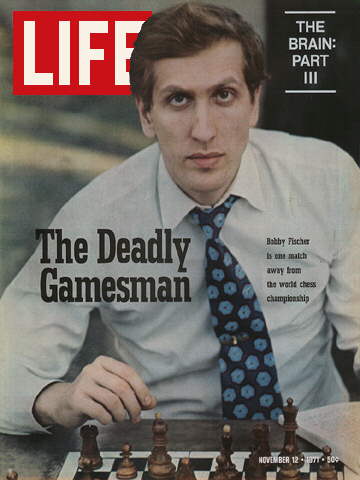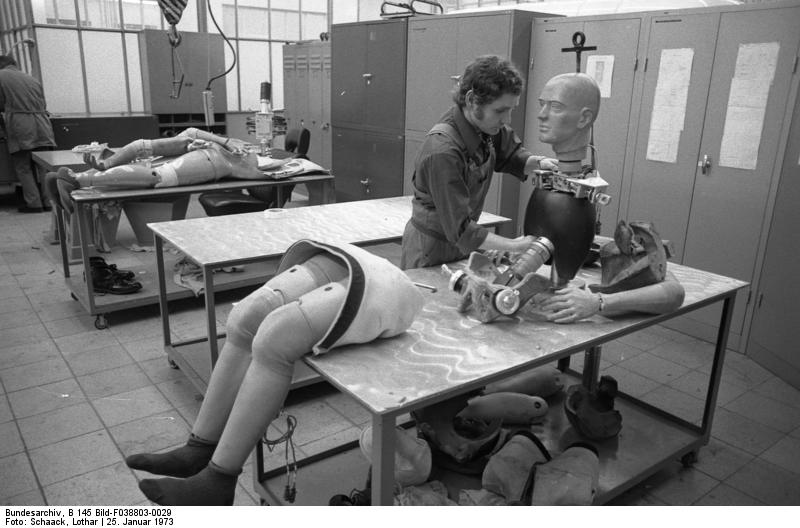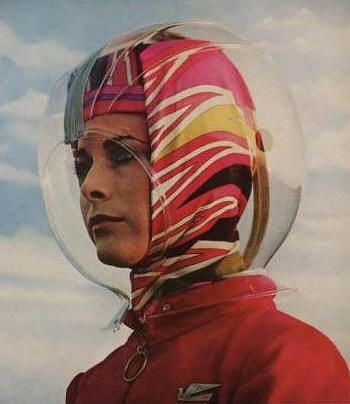Footage of a “living” Allosauraus from Japan.
Someday we will be able to choose our looks and abilities, we will engineer our dreams on scientific terms, and even that will just change and not end our competition for an elusive ideal. But for now, people go to extremes to find the future, to locate the fountain of youth. Case in point: the “pretties” of Thailand. From Jonah Fisher at the BBC:
“They’re beautiful, well dressed and for the right price will promote anything from washing powder to luxury cars.
But working as a product promoter or ‘pretty’ in Thailand is an occupation where image counts for everything.
At 32, Athitiya Eiamyai had reached the age when most ‘pretties’ start to find demand for their services falling.
For a decade she had batted her eyelashes and flashed a ready smile to promote everything from luxury cars to new mobile phones.
But for Athitiya, or Kratae as everyone knew her, retiring gracefully from this $100-a-day job was not an option. She had parents and siblings who depended on the money she earned and she told her friends she was determined to fight ageing every step of the way.
In the last five years of her life, she had invested thousands of dollars into altering the way she looked. Her skin had been lightened and she’d had several rounds of surgery to change her nose, narrow her jaw and augment her breasts.
But according to her best friend and fellow pretty Pim Saisanard, she still wasn’t happy.
‘Kratae used to say if you want to be a beautiful woman you must put up with pain,’ she said. ‘She wanted bigger hips to match her bigger breasts. And she said that would make her perfect.'”
Tags: Jonah Fisher
A Smithsonian blog post by Rose Eveleth suggests a list of the ten oddest Wikipedia entries. The hands-down winner is the one about Robert Shields, who wrote in his diary every five minutes for decades, detailing, in Seinfeld-ian terms, the most excruciating minutiae imaginable. He essentially live-blogged his life before there were blogs. An excerpt from his Wiki page:
“Believing that discontinuing his diary would be like ‘turning off my life,’ he spent four hours a day in the office on his back porch, in his underwear, recording his body temperature, blood pressure, medications, describing his urination and bowel movements, and slept for only two hours at a time so he could describe his dreams. It is believed that Shields suffered from hypergraphia, an overwhelming urge to write. He once said ‘Maybe by looking into someone’s life at that depth, every minute of every day, they will find out something about all people.’ He also left behind samples of his nose hair for future study.
Shields’s self-described ‘uninhibited,’ ‘spontaneous’ work was astonishing in its mundaneness, and now fills 94 cartons in the collections of Washington State University, to whom he donated the work in 1999. In a May 2000 interview he said ‘I’ve written 1200 poems and at least five of ’em are good.’ He also claimed to have written the story base for Elvis Presley’s film Love Me Tender based on the Reno Gang of Seymour, Indiana where Robert William Shields was born. Copies of the manuscript are at the Kansas State Historical Society, E P Lamborn collection. Shields based his manuscript on John Reno’s 1879 autobiography.
Excerpts:
Under the terms of the donation of his diary to Washington State University, the diary may not be read or subjected to an exact word count for 50 years from his death. However, many excerpts have appeared, including the following:
July 25, 1993:
7 am: I cleaned out the tub and scraped my feet with my fingernails to remove layers of dead skin.
7.05 am: Passed a large, firm stool, and a pint of urine. Used five sheets of paper.
April 18, 1994:
6:30-6:35: I put in the oven two Stouffer’s macaroni and cheese at 350°.
6:35-6:50: I was at the keyboard of the IBM Wheelwriter making entries for the diary.
6.50-7.30: I ate the Stouffer’s macaroni and cheese and Cornelia ate the other one. Grace decided she didn’t want one.
7.30-7.35: We changed the light over the back stoop since the bulb had burnt out.
August 13, 1995:
8.45 am: I shaved twice with the Gillette Sensor blade [and] shaved my neck behind both ears, and crossways of my cheeks, too.”
Tags: Robert Shields, Rose Eveleth
Remember album cover art, that thing that was important before we could fit record stores in our pockets? The most famous example of the form–and perhaps the best–was Peter Blake’s design for the Beatles’ Sgt. Pepper’s Lonely Hearts Club Band theme album, which was a collage of famous, disparate figures–Lenny Bruce, Sonny Liston, Oscar Wilde, etc.– that disappeared the line between high and low art. In a Financial Times piece by Peter Aspden, the now 80-year-old artist reflects on his career (though not much on his most famous work): An excerpt:
“There is a tall, forbidding figure tucked inside the entrance of Peter Blake’s west London studio. It’s a waxwork model of Sonny Liston, the heavyweight boxer whose fights with Muhammad Ali in the early 1960s made him one of that decade’s most controversial sporting celebrities. The look on his face is distant, and a little scary. It is impossible not to think of him as a bouncer, guarding the treasure trove of artistic wonders that lie behind him. To anyone familiar with the iconography of popular music, he is also a recognisable figure. The model of Liston is present in Blake’s most renowned work, and one of the most famous pop images in history, standing solemnly among the motley collection of celebrities on the cover of The Beatles’ Sgt. Pepper’s Lonely Hearts Club Band album.
For many people, Blake’s inspired collage summed up the frenetic times. Its improbable placings of modern history’s cultural icons – Lenny Bruce next to Karlheinz Stockhausen; Fred Astaire rubbed up against Edgar Allan Poe – could not help but make you smile. It was a playful fantasy, a light-touched piece of artistic mischief that could not hide its disregard for the pomposity of postwar ‘adult’ Britain. Very 1960s; very Peter Blake.
Blake today does not much care to talk about Sgt. Pepper, not necessarily because of his feelings towards the meagre reward he received for his art work (said to be about £200) but because he finds it a little boring and tires of strangers walking up to him, asking him to sign half-a-dozen copies, and instantly putting them on eBay. But the spirit of that irreverent cover is still vividly alive in the artist.”
Tags: Peter Aspden, Peter Blake
Private zoos of more than a century ago existed on both sides of the Atlantic, though the ones in the UK seem to have been the wildest. A report of these unregulated menageries from the London Daily Mail that was republished in the November 17, 1901 Brooklyn Daily Eagle:
“‘Can I sell you a nice little armadillo, sir? They’re great favorites now, and the price of that armor-plated beauty is only £2. Or if you prefer something larger for your money here is a striped hyena. We call him Dan Leno. Ten pounds is the price. Listen to him laugh. It’s quite catching, isn’t it?’
And the man who daily sells wild and fearsome beasts as placidly as if he sold tea and sugar, chuckled in sympathy with the snarling, gibbering brute that showed its teeth between the bars of the cage. The Daily Mail representative was not buying hyenas that morning.
The attempted ‘deal’ took place at one of four private zoos in London, where the animal lover may purchase as a domestic pet almost anything that crawls, creeps or flies. For £25 down and the balance on delivery he can have a full-fledged rhinoceros capable of demolishing a fairly sized jerry-built villa, or he can stock the fountain basin on his lawn with young alligators, which at £15 each are regarded as extremely cheap today.

“It was a common sight to see ladies leading little lemurs or baby pumas along the streets in the same way that they lead pet dogs.”
The man who dislikes his next-door neighbor can derive satisfaction and amusement by allowing a few Indian pythons to roam about promiscuously. Six feet of python are obtainable for £2. In the capacity of peacemaker and healer of neighborly differences the python should be invaluable in the suburbs.
Then there is the gentleman in the Highbury District who keeps four or five different kinds of lemurs, while until recently a young man who occupied a flat in another suburb kept a leopard, which used to run about the rooms and curl itself up on his knees like an overgrown cat. That leopard is now no more. It was accidentally suffocated, but the residents of the flat now breathe with more freedom than they did before. Pumas are the favorite pets of a Kensington lady, whose name and address are withheld at the request of the dealer who supplies the animal.
With the spread of the taste for strange and curious pets has come a corresponding diversity in the character of the four-footed passengers in London streets. Last summer it was a common sight to see in the West End ladies leading little lemurs or baby pumas along the streets in the same way that they lead pet dogs. This summer it is probable that the spectacle will become still more common, judging from the number of orders received at the various depots for baby pets of this description. Full grown animals of a dangerous type have not yet obtained the liberty of the footpath, but perhaps they will do so some day, and London will, in one respect at least, be reminiscent of primitive times.”
donation (bronx)
hi my name is emy. im looking for a female that would like to carry a baby from my husband. i cant have no baby and i would like to make my life happy by letting my husband have one baby.
must live with us through the whole 9 months.
my husband is clean of all infection. he was tested. please help us have one baby. he deserves it. he’s a great man.
Tags: Emy
From a 1948 New Yorker piece by Lillian Ross about young Norman Mailer, who was experiencing his first rush of fame with The Naked and the Dead:
“Mailer’s royalties will net him around thirty thousand this year, after taxes, and he plans to bank most of it. He finds apartments depressing and has a suspicion of possessions, so he and his wife live in a thirty-dollar-a-month furnished room in Brooklyn Heights. He figures that his thirty thousand will last at least five years, giving him plenty of time in which to write another book. He was born in Long Branch, New Jersey, but his family moved to Brooklyn when he was one, and that has since been his home. He attended P.S. 161 and Boys High, and entered Harvard at sixteen, intending to study aeronautical engineering. He took only one course in engineering, however, and spent most of his time reading or in bull sessions. In his sophomore year, he won first prize in Story’s college contest with a story entitled ‘The Greatest Thing in the World.’ ‘About a bum,’ he told us. ‘In the beginning, there’s a whole tzimes about how he’s very hungry and all he’s eating is ketchup. It will probably make a wonderful movie someday.’ In the Army, Mailer served as a surveyor in the field artillery, an Intelligence clerk in the cavalry, a wireman in a communications platoon, a cook, and a baker, and volunteered, successfully, for action with a reconnaissance platoon on Luzon. He started writing The Naked and the Dead in the summer of 1946, in a cottage outside Provincetown, and took sixteen months to finish it. ‘I’m slowing down,’ he said. ‘When I was eighteen, I wrote a novel in two or three months. At twenty-one, I wrote another novel, in seven months. Neither of them ever got published.’ After turning in the manuscript of The Naked and the Dead, he and his wife went off to Paris. ‘It was wonderful there,’ he said. ‘In Paris, you can just lay down your load and look out at the gray sky. Back here, the crowd is always yelling. It’s like a Roman arena. You have a headache, and you scurry around like a rat, like a character in a Kafka nightmare, eating scallops with last year’s grease on them.'”
Tags: Lillian Ross, Norman Mailer
Some search-engine keyphrases bringing traffic to Afflictor this week:
- Thoughts about the final Presidential debate.
- I’ll help sick people if Donald Trump will blow a racehorse.
- Even more proof that Donald Trump is a complete moron.
- One thing about that chucklehead Piers Morgan.
- Old Print Article: Pennsylvania farmer John Walters ate 48,300 pies. (1901)
- Classic Photography: Carrie Nation, Hatchet At The Ready. (1901)
- Featured Videos: Mike Wallace investigates the tabloidization of local news (1973) + TV spot for “portable,” 22-pound Compaq computer (1984) + A brainwave-sensing headband + Australian TV report on Bob Marley (1979) + Bryant Gumbel interviews John Updike (1982) + Werner Herzog discusses the making of Nosferatu the Vampyre (1979) + Segment about the advent of computer animation (1970) + Robot autonomously circumvents obstacles.
- Recently Posted on NYCs Craigslist: I need to get off of Craigslist and call 911 + I am hoping you will believe that there are women begging me for sex + If you’re an awful parent, perhaps you can help me.
- Neuropsychologist A.R. Luria studied one of the world’s great memories.
- Trying to understand why the super-rich hate the President.
- Freeman Dyson recalls his relationship with Ludwig Wittgenstein.
- Elon Musk tells Chris Anderson about his mission to Mars.
- In the 1970s, NASA designed fantastic stratospheric cities.
- Upton Sinclair was the target of the first modern political smear campaign.
- Pete Hamill covered the tempestuous 1968 Summer Olympics.
- Jonathan Safran Foer reconsiders chess legend Bobby Fischer.
- A solar farm is blooming in the Mohave Desert.
- The origin story behind the board game Monopoly.
- The oldest commercial computer is returned to working order.
- Nature preserves haven’t stopped biodiversity loss.
- A new jet may be able to travel 2,500 miles per hour.
- Sculpture may or may not survive the Digital Age.
- A consideration of philosopher Thomas Nagel’s new book.
- A smart highway is being built in the Netherlands.
- New technology has changed cinema, but for the better?
- A step forward in performance-enhancing exoskeletal limbs.
- The Mona Lisa’s popularity is usually explained with silly reasoning.
- Recalling when Robert Goddard decided he wanted to build rockets.
- A brief note from 1892 about a hasty undertaker.
- A brief note from 1892 about a sky rocket.
- This weeks Afflictor keyphrase searches.
Really good segment from a 1970 episode of BBC’s Tomorrow’s World about the advent of computer animation.
Tags: Stan Hayward
The origin story of the board game Monopoly from a Christopher Ketcham article in Harper’s:
“The game’s true origins, however, go unmentioned in the official literature. Three decades before [Charles] Darrow’s patent, in 1903, a Maryland actress named Lizzie Magie created a proto-Monopoly as a tool for teaching the philosophy of Henry George, a nineteenth-century writer who had popularized the notion that no single person could claim to ‘own’ land. In his book Progress and Poverty (1879), George called private land ownership an ‘erroneous and destructive principle’ and argued that land should be held in common, with members of society acting collectively as ‘the general landlord.’
Magie called her invention The Landlord’s Game, and when it was released in 1906 it looked remarkably similar to what we know today as Monopoly. It featured a continuous track along each side of a square board; the track was divided into blocks, each marked with the name of a property, its purchase price, and its rental value. The game was played with dice and scrip cash, and players moved pawns around the track. It had railroads and public utilities—the Soakum Lighting System, the Slambang Trolley—and a ‘luxury tax’ of $75. It also had Chance cards with quotes attributed to Thomas Jefferson (‘The earth belongs in usufruct to the living’), John Ruskin (‘It begins to be asked on many sides how the possessors of the land became possessed of it’), and Andrew Carnegie (‘The greatest astonishment of my life was the discovery that the man who does the work is not the man who gets rich’). The game’s most expensive properties to buy, and those most remunerative to own, were New York City’s Broadway, Fifth Avenue, and Wall Street. In place of Monopoly’s ‘Go!’ was a box marked ‘Labor Upon Mother Earth Produces Wages.’ The Landlord Game’s chief entertainment was the same as in Monopoly: competitors were to be saddled with debt and ultimately reduced to financial ruin, and only one person, the supermonopolist, would stand tall in the end. The players could, however, vote to do something not officially allowed in Monopoly: cooperate. Under this alternative rule set, they would pay land rent not to a property’s title holder but into a common pot—the rent effectively socialized so that, as Magie later wrote, ‘Prosperity is achieved.’
For close to thirty years after Magie fashioned her first board on an old piece of pressed wood, The Landlord’s Game was played in various forms and under different names—’Monopoly,’ ‘Finance,’ ‘Auction.’ It was especially popular among Quaker communities in Atlantic City and Philadelphia, as well as among economics professors and university students who’d taken an interest in socialism. Shared freely as an invention in the public domain, as much a part of the cultural commons as chess or checkers, The Landlord’s Game was, in effect, the property of anyone who learned how to play it.” (Thanks Browser.)
Tags: Charles Darrow, Christopher Ketcham, Henry George, Lizzie Magie
A step forward in performance-enhancing limbs has been recorded at MIT. From Hal Hodson at New Scientist:
“IF YOU fancy an extra pair of hands, why not take a leaf out of Dr Octopus’s book? A pair of intelligent arms should make almost any job a lot easier.
The semi-autonomous arms extend out in front of the body from the hips and are strapped to a backpack-like harness that holds the control circuitry. The prototype is the handiwork of Federico Parietti and Harry Asada of the Massachusetts Institute of Technology, who suggest that one of the first uses could be to help factory workers, or those with tricky DIY tasks to perform.
‘It’s the first time I’ve seen robot arms designed to augment human abilities. It’s bold and out of keeping with anything I’ve ever seen to attach two arms to a human,’ says Dave Barrett, a roboticist and mechanical engineer at Olin College in Needham, Massachusetts.
So how are the arms controlled? Parietti and Asada designed the limbs to learn and hopefully anticipate what their wearer wants. The idea is that the algorithms in charge of the limbs would first be trained to perform specific tasks.”
Tags: Federico Parietti, Hal Hodson, Harry Asada
Since Donald Trump made an insulting challenge to the President to reveal his passport and college records in return for a donation to charity, we thought it was okay to make such an offer to Trump.
Here goes: There’s a sick boy who can’t walk, and we know how to make him healthy again. If you agree to our proposal, we will help him. If not, we’ll take him to a cliff and push him off. It’s up to you. We also know the cure for AIDS and cancer and we will share them, but only if you do what we say.
What we want is the following: 1) Reveal the documents showing how much money, land and contacts your father handed over to a “self-made man” such as yourself. 2) Explain how much he helped bail you out when you nearly blew all these advantages. 3) Perform oral sex on a racehorse.
The last condition is really important. That horse penis is not going to suck itself. If you accept our humiliating offer, a child will walk again and many sick people will be well. If you don’t do what we say, we have to question your sense of charity.
You might be asking, why wouldn’t they just help sick people if they can? It wouldn’t change their lifestyle at all. Why do they have to denigrate someone else in order to perform a kind act? What kind of people attach embarrassing conditions to good works?
Frankly, we’re puzzled that you can ask so many questions with that horse cock in your mouth. But we understand your point. Anyone who would behave this way, who would so desperately want to reduce others is a hugely unhappy person who realizes down deep how awful they are and feels lonely in that awfulness. Such a person would want to drag other people down to that level, especially a person who is accomplished and dignified.
Think about it, dum-dum. It’s an offer you can’t refuse. A lot of people now know what a racist buffoon you are, so it would be very good publicity for you to help a sick child. It would kind of be like Babe Ruth visiting an ailing kid in the hospital and promising to hit him a home run. You know, if Babe Ruth gargled with horse jizz. We await your decision.•
Scientist and space enthusiast Al Globus wrote the intro for the book Orbital Space Colonies, which was never published. Stratospheric cities, designed by NASA in the ’70s, have likewise not come to fruition. From Globus’ intro:
“Humanity has the power to fill outer space with life. Today our solar system is filled with plasma, gas, dust, rock, and radiation — but very little life; just a thin film around the third rock from the Sun. It’s time to change that. In the 1970’s Princeton physicist Gerard O’Neill with the help of NASA Ames Research Center and Stanford University showed that we can build giant orbiting spaceships and live in them. These orbital space colonies can be wonderful places to live; about the size of a California beach town and endowed with weightless recreation, fantastic views, freedom, elbow-room in spades, great wealth and true independence.
We can be life’s taxi to the stars — or at least to the rest of this solar system. Given the will, mankind can build first-class orbital real estate sufficient for perhaps a trillion people to live in luxury. If this sounds ridiculous, consider your great-great grandfather’s reaction if you told him that by the year 2000, hundreds of millions of people would fly each year.
When the first American landed on the moon in 1969 after only eight short years of intense effort, the National Aeronautical and Space Administration (NASA) proved that we could do nearly anything consistent with the laws of physics. A few years later, Princeton physicist Gerard O’Neill and others showed that orbital space colonies were physically possible (Johnson and Holbrow, 1975) (O’Neill, 1977). Dr. O’Neill’s analysis strongly suggested that asteroids and lunar mines could supply the materials, the Sun could provide the energy, and that our technology had nearly reached the point where we could build orbital cities. These cities could be placed anywhere in the solar system, although beyond Mars nuclear power might need to replace solar energy. O’Neill speculated that we would be well on the way to building orbital colonies by now. We aren’t.
There were two flaws in Dr. O’Neill’s vision, both of which can be fixed. First, transportation is vital and he assumed that NASA’s space shuttle would function as advertised, including a planned fifty flights per year at a cost of $500 per pound to orbit; this turned out to be false. Second, even with the promised transportation system, Dr. O’Neill knew that building the first colony would involve a titanic up-front financial investment. This investment would take decades to generate any return, much less a profit. Orbital Space Colonies follows in Dr. O’Neill’s footsteps with improvements; showing how to develop the necessary transportation and colonize the solar system with merely an extremely large investment; but one that produces some returns fairly quickly. This book proposes a human space program driven by tourism, real estate, energy, and strategic materials; a program that will garner great power and wealth to those who pursue it.
To colonize the solar system, we need to adjust our thinking a bit. We are planetary surface creatures. That is where we live, where we’ve evolved, and we’re good at it. Living inside giant space ships is foreign to our thinking. But there is precious little usable planetary surface in our solar system, so it’s very valuable. Hundreds of billions of dollars and many lives are spent on sophisticated military ventures to take and hold territory. However, a small fraction of that money could build the first orbital colonies within a few decades. This would eventually provide access to hundreds of times the currently available useful land area and millions of times the energy we now control. Materials from the single largest known asteroid are sufficient to build orbital space colonies with living areas more than two hundred times the surface area of the Earth. These are facts that make one wonder why we work so hard for chump change like Mid-East oil and spend so little on space colonization.
The fact remains that orbital colonization will be expensive and most paths involve enormous up-front costs before any return on investment. The approach presented in this book is to pay as we go: take one step at a time, each as simple as possible, and each one more capable than the last. These steps are at least arguably, although perhap not actually, profitable and lead us to a time when we finally build a colony that is attractive to the average middle-class family. That first colony can then build more colonies. At that stage, we have a reproducing seed that, like life on Earth, can spread to fill all livable space. Since the livable space is anywhere in the vastness of the solar system, the limits to growth will be eliminated for quite some time.
Malthus, an influential Englishman, noticed that plants and animals produce far more offspring than can survive, and that people can do the same. Around 1800 he predicted that without family size controls mankind would increase in number until all available resources were exhausted; after famine and deadly epidemics would rule. Malthus and other limits to growth adherents were and are incorrect. They didn’t consider that, unlike animals and plants, mankind’s knowledge almost always increases, and that knowledge multiplies the available resources. In the last hundred years knowledge has accumulated at an astonishing and increasing pace. In particular, we now have much of the knowledge needed to open the door to the resources of this solar system. These resources might be exhausted one day, but it will take many thousands of years. That’s good enough for now.
The dinosaurs failed, after millions of successful years, because an asteroid struck the Earth and wiped them out. Since then we have become a space-faring species with the power to avoid that fate by building orbital space settlements housing perhaps a trillion people and a vast cornucopia of plants and animals. Expanding throughout the solar system can be our destiny.
The universe is waiting for us.”
Tags: Al Globus
Carrie Amelia Moore didn’t care for alcohol and she didn’t mince words about it. But it was her axe-wielding that got most of the attention. One of the earliest and most ardent prohibitionists, Carrie Nation, as she came to be known, was infamous for entering bars and taking her axe to the inventory. No law could stop her and eventually she and her kind got the law changed, and for a while America was a dry country–well, apart from speakeasys and bathtubs and flasks. (For a good book about the period, read Daniel Okrent’s Last Call.)
On one visit to Atlantic City in 1901, Nation behaved unusually soberly, didn’t go crazy with an axe, and sort of disappointed everyone. From the August 19 New York Times of the year:
“Atlantic City, N.J.–Mrs. Carrie Nation has come and gone, and there was not a smashing nor anything else sensational. The hopes of the crowds that she would use a hatchet upon some saloonkeeper’s outfit were accordingly dashed.
Mrs. Nation sold 2,500 of her souvenir hatchets at 25 cents each, so that her day’s work was highly profitable. She took a bath in the ocean this morning, and later spoke to an audience of 5,000 persons. Her talk was on morals.
Her visit was a great disappointment for it was hoped that to liven things she would proceed to some of her characteristic acts. Perhaps that she did not do so was partly due to the weather, which was not conducive to enjoyment.”
The opening of Jonathan Safran Foer’s Slate piece about Bobby Fischer, which is taken from Jewish Jocks: An Orthodox Hall of Fame:
“A Jew wrote The Natural, but has there ever been a natural Jew? Free-spiritedness, joie de vivre, ease in the world—these are not what we do. We do scrappiness, resilience, hard work, self-questioning, self-consciousness, self-destruction, and unflappable will. This applies especially to our athletes, many of whom were not given the best of genetic toolboxes. Most great Jewish athletes have at least this in common: they overcome God’s gifts.
Not a jock, and not a Jew by any definition richer than heredity, Bobby Fischer was the quintessential Jewish Jock. He worked harder than any of his peers. He attempted to conceal his insecurity behind an ego built for 20, and his self-love behind self-hatred behind self-love. And perhaps more than any human who has ever lived, he kvetched: The board is too reflective, the presence of breathing humans too distracting, the high-frequency sounds—which only he and Pomeranians could detect—made game play utterly impossible. Some loved him for his loony obstinacy. Most didn’t.
Contrary to our notions of a chess prodigy and the accepted version of Bobby Fischer’s biography, he was not magnificent from the start. He had to learn, practice, and mature. As an adolescent in Brooklyn, he developed an unusually strong passion for a game that he was not unusually good at. (Children his age regularly beat him.) While he did clearly come into some innate prodigious talent—hard work might unleash genius, but it never creates it—what distinguished him, both in his formative years and through his career, was his single-minded, obsessive devotion to the game. He was known to practice 14 hours a day, and fall asleep with one of his several hundred chess books and journals on his chest. (‘I give 98 percent of my mental energy to chess,’ he once said. ‘Others give only 2 percent.’) Like a good Jewish boy, he outworked his peers and brought the A home to Mama. And like a good Jewish boy, he couldn’t stand Mama—her politics, priorities, relationship to money, or religion.
He got better. And better. “
- To see all the other Bobby Fischer posts, go here.
DARPA, man’s best friend, offers footage of the Pet-Proto in action. From the official literature: “The Pet-Proto, a predecessor to DARPA’s Atlas robot, is confronted with obstacles similar to those robots might face in the DARPA Robotics Challenge (DRC). To maneuver over and around the obstacles, the robot exercises capabilities including autonomous decision-making, dismounted mobility and dexterity.”
DONE WITH SEX
What the hell is it with women over 40 anyway? They have the sexual drive of a 21 year old man, and more and more, I find their demands taxing. I’ve not the patience for the requested extended foreplay most of these women seem to require. Additionally, requests…no…DEMANDS for extended intercourse and frequency of intercourse leaves me drained, mentally and physically. A couple of times a week would be more than sufficient for me. Ever been yelled out by a naked, stark raving mad woman, pissed that you don’t want to have sex with her?
And so it seems that women reach their sexual peak at 40, and men, at 17.
Do you think sometimes that if there is a God, he’s into practical jokes?
56/M
Piers Morgan, something that was found in David Frost’s stool sample, is not a bright person. An arrogant, dishonest, alleged phone hacker, sure, but not bright. It’s very hard to grow intelligent when you’re gigantic ego blocks the sun.
The other night poor Tyler Perry, who seems like a very nice man, had to sit there and be polite as Morgan showed a graphic which stated that President Obama has 92% of the African-American vote while Mitt Romney has only 3%. The blowhard Morgan said this: “You see, I just don’t think that helps the debate, either. It doesn’t help that almost no black people in America want to vote for one of the two candidates.” Perry made a quiet point about how African-Americans usually vote Democratic. Morgan didn’t clarify his comment and say that he meant that Republicans had behaved in a way that was repugnant to minorities, that their attempts to suppress the African-American vote and exploit racist Birtherism had done great damage. The implication seemed to be that there was blame to go around. It was a strange moment.
But regardless of what he meant, his underlying point was bullshit. As I’ve mentioned before, if Herman Cain was running against Hillary Clinton, the white candidate would enjoy the large majority of African-American support. So it’s not just about race–it’s more about Party and what one particular candidate can offer. I’m sure someone as self-important as Morgan has never thought this through, but this boob should be in no position to offer serious political commentary in any medium.
Tags: Piers Morgan, Tyler Perry
Despite our behavior, I think people are getting smarter in a lot of ways, but I’m sure our tools and environments are getting exponentially brighter. From Design Boom, a piece about the first smart highway, coming to the Netherlands:
“Instead of focusing on the car to innovate the driving experience, roosegaarde and heijmans found it about time to innovate the highways. With smarter transportation research already disposable for use for decades, an implementation plan capable of updating the highway with new designs such as a ‘glow-in-the-dark road,’ ‘dynamic paints,’ ‘interactive lights,’ ‘induction priority lanes’ and ‘wind lights.’ The system essentially creates roads that are more socially conscious and interactive through the inclusion of light, energy and road signs which automatically adapt to various traffic situations.”
From the November 17, 1892 Brooklyn Daily Eagle:
“Decatur, Ala.–During the Democratic celebration last night a sky rocket exploded prematurely and struck Miss Jones, a beautiful young lady, aged 16 years, in the left eye. It pierced the eyeball and penetrated the brain causing instant death. The accident broke up the celebration.”
Tags: Miss Jones
I put up a post last week about Thomas Nagel’s famous 1974 essay, “What Is It Like To Be A Bat?” At Prospect, Malcolm Thorndike Nicholson’s article looks at the philosopher’s new book. The opening:
“If we’re to believe science, we’re made of organs and cells. These cells are made up of organic matter. Organic matter is made up chemicals. This goes all the way down to strange entities like quarks and Higgs bosons. We’re also conscious, thinking things. You’re reading these words and making sense of them. We have the capacity to reason abstractly and grapple with various desires and values. It is the fact that we’re conscious and rational that led us to believe in things like Higgs bosons in the first place.
But what if science is fundamentally incapable of explaining our own existence as thinking things? What if it proves impossible to fit human beings neatly into the world of subatomic particles and laws of motion that science describes? In Mind and Cosmos (Oxford University Press), the prominent philosopher Thomas Nagel’s latest book, he argues that science alone will never be able to explain a reality that includes human beings. What is needed is a new way of looking at and explaining reality; one which makes mind and value as fundamental as atoms and evolution.” (Thanks Browser.)
We definitely need to be careful to not ruin desert ecology, but we should be moving forward with solar farms in these regions whenever possible. The Mojave is currently being “mined” for its rays. From Mark Strauss at the Smithsonian:
“The Mojave Desert is blooming. Construction crews are erecting mirrors —each measuring 70 square feet—at a rate of 500 per day across some 3,500 acres. When completed in late 2013, the $2.2 billion Ivanpah Solar Electric Generating System—the largest of its type in the world—will power 140,000 California homes.
Unlike photovoltaic technology, which converts solar radiation directly into electricity, the Ivanpah facility generates heat. More than 170,000 mirrors will gather tremendous amounts of sunlight and focus it on three towers filled with water, raising temperatures to more than 1,000 degrees Fahrenheit and producing steam that spins turbines that generate electricity. The Oakland-based company BrightSource Energy, which is overseeing construction by the Bechtel corporation, says that using sunlight instead of fossil fuels to power the turbines will reduce carbon emissions by more than 400,000 tons annually. The desert region—thanks to its elevation and clear, dry air—receives reliable sunlight 330 to 350 days per year.”
Tags: Mark Strauss
Werner Herzog, one of my favorite filmmakers, discussing my least favorite Werner Herzog film, Nosferatu the Vampyre. Maybe I need to give this updating of German Expressionism another chance. Or perhaps it would have been better if he’d cast Fred Astaire as a stupid, stupid vampire. (Thanks Biblioklept.)
Tags: Werner Herzog











